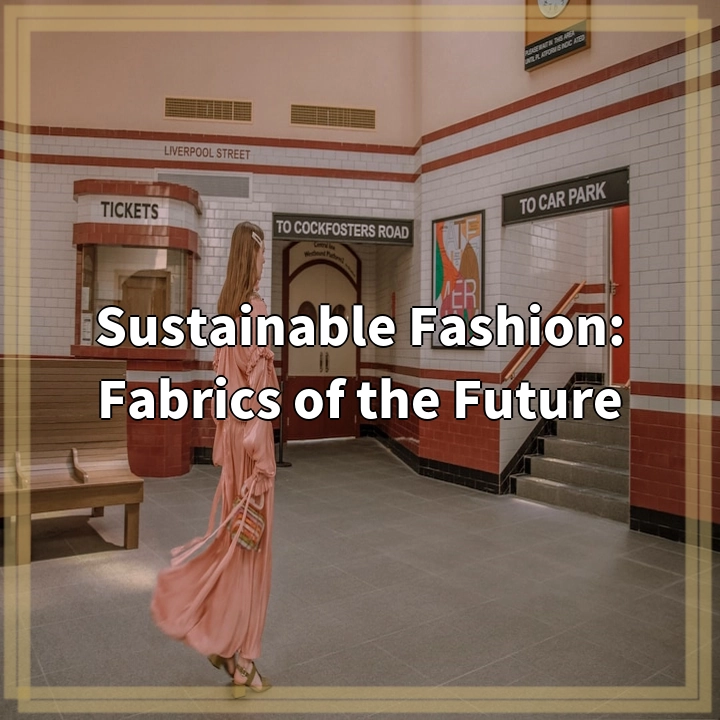
What is Sustainable Fashion: Fabrics of the Future?
Sustainable fashion, also known as eco-fashion or ethical fashion, refers to the movement and practice of producing clothing, accessories, and textiles in an environmentally and socially responsible manner. It involves considering the entire lifecycle of a garment, from the sourcing of materials to production, distribution, and disposal.
One key aspect of sustainable fashion is the exploration and development of innovative fabrics of the future. These fabrics aim to replace traditional materials that have significant environmental and social impacts, such as water pollution, deforestation, and human rights abuses.
Real-World Problems Associated with Sustainable Fashion: Fabrics of the Future
While sustainable fashion and the development of new fabrics offer potential solutions to the many problems associated with the conventional textile industry, they also face several challenges and complexities.
1. Scalability and Availability
One of the main obstacles is achieving scalability and availability of sustainable fabrics. Many innovative materials are still in the experimental and development stage, making them more expensive and not widely accessible to mass-market fashion brands and consumers. Scaling up production and ensuring a consistent supply chain is crucial for their widespread adoption.
2. Performance and Durability
Another challenge is ensuring that the new fabrics meet the functional requirements of clothing and have comparable or superior performance and durability compared to traditional materials. Clothing made from sustainable fabrics should be able to withstand regular wear, washing, and maintenance while maintaining their quality.
3. Consumer Awareness and Demand
Creating a significant shift towards sustainable fashion requires generating awareness among consumers about the benefits and importance of choosing garments made from innovative fabrics. Educating consumers about the environmental and social impacts of fashion and promoting the value of sustainable alternatives is crucial in increasing demand and market acceptance.
4. Cost and Affordability
Cost is often a significant factor in consumer behavior, particularly when it comes to fashion. Sustainable fabrics, especially those that are at the cutting edge of technology, can be more costly to produce, which may translate to higher retail prices. Making sustainable fashion more affordable and accessible to a wider audience is essential in driving widespread adoption.

Solutions for Sustainable Fashion: Fabrics of the Future
While the challenges associated with sustainable fabrics in fashion are significant, there are several solutions and strategies that can help address these issues and pave the way for a more sustainable industry:
1. Investment in Research and Development
Continued investment in research and development is crucial for advancing sustainable fabrics. This includes funding projects focused on creating innovative materials, improving production processes, and finding ways to make sustainable fabrics more cost-effective without compromising on quality or performance.
2. Collaboration and Partnerships
Collaboration among fashion brands, textile manufacturers, researchers, and sustainability advocates can accelerate progress in sustainable fashion. Partnerships can facilitate knowledge sharing, resource pooling, and joint efforts to address challenges such as scalability, availability, and consumer awareness.
3. Education and Consumer Engagement
Educating consumers about the environmental and social impacts of the fashion industry and the benefits of sustainable fabrics is essential. Brands and organizations can engage consumers through marketing campaigns, online content, and events to raise awareness and foster demand for sustainable fashion.
4. Policy and Industry Regulations
Governments and industry associations can play a crucial role in promoting sustainable fashion by implementing supportive policies and regulations. These can include incentives for brands to adopt sustainable practices, guidelines for labeling and transparency, and regulations that enforce environmental and social standards in textile production.
5. Circular Economy and Recycling Initiatives
Embracing a circular economy approach is vital for reducing waste in the fashion industry. Brands can integrate recycled materials into their designs, implement take-back programs for old garments, and explore innovative recycling technologies to minimize the environmental impact of discarded clothing.















